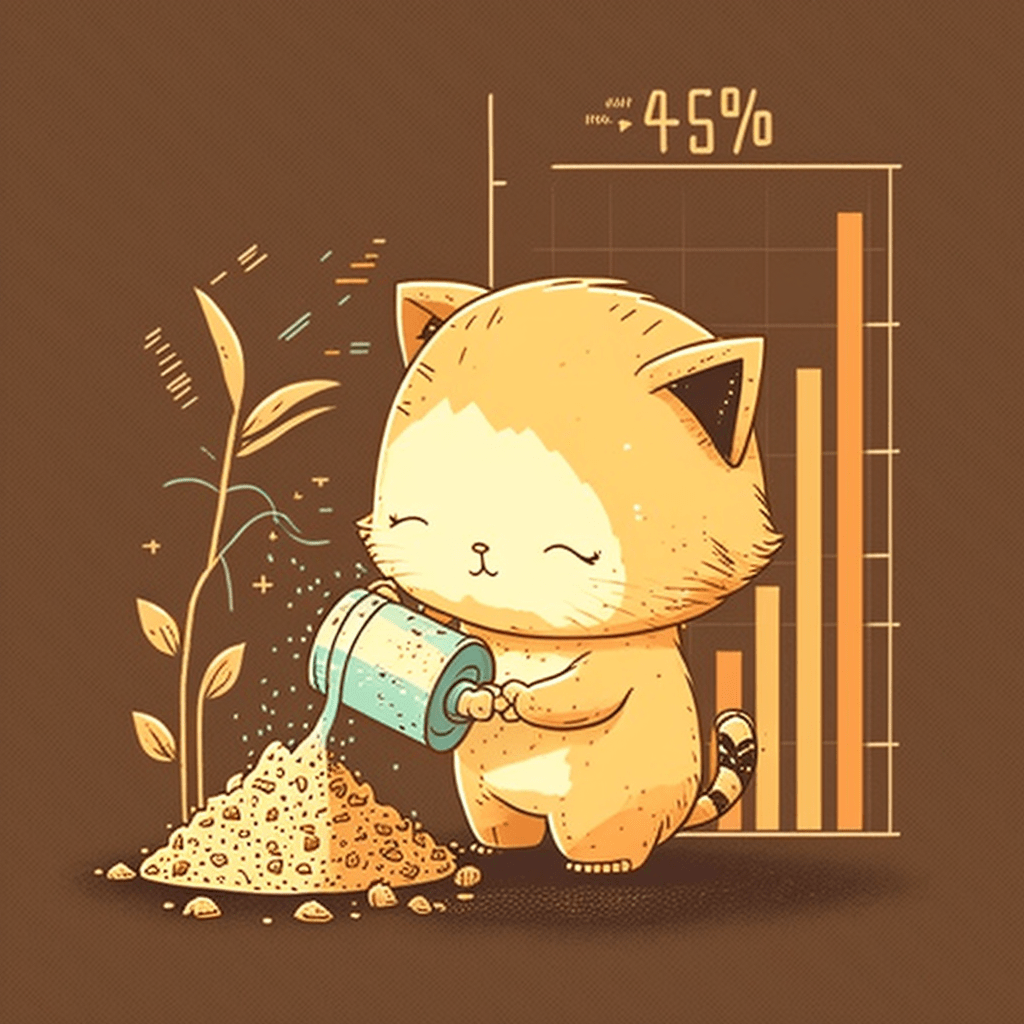Discord: Where web3 communities connect & thrive
Trying to figure out how to grow your Discord server is a big challenge with very few resources online to learn from. If you’re here, that means you’ve recognized Discord’s strength. You know that a thriving community is absolutely necessary for success. You can have the most wonderful mission, or product, or tech in the world – but if nobody even knows about it… will you succeed? Sadly, probably not.
Growing a healthy Discord community is a challenging feat. You probably have questions like:
- How do I actually get my first 100 members?
- How do I promote my Discord server?
- How do I grow a Discord server organically?
You probably know it needs to be done, you just aren’t sure how.
In this article, we’ll cover how to grow your Discord server by sharing what we learned ourselves, through growing our own Discord from 0-25k followers in just 2 months.
The biggest question we’re going to address here today is, “what the heck am I doing wrong?”
To anybody who’s started growing their Discord OR anybody who wants to learn about common mistakes, this article is for you.
Tip #1: You’re not utilizing analytics to plan next steps.

You already know you need an active community. In fact, you’re actively trying to make this happen: you’re writing Tweets, hosting Discord events, or sharing amazing resources with your members, or trying to cultivate friendships between members – but yet, it’s not really working.
It FEELs like you’re doing many things but there’s a chance that none of them are actually working. The question I’d like to ask is: are you using analytics to plan your next steps?
Better yet, are you using it at all? So many new projects don’t even realize that Discord has incredible analytics tools. (How do you access them? Click on your server icon > server settings > server insights > open the insight page)
3 things to examine in the “growth & activation” tab:
First, how many new members are joining each week?
Is it going up or down? If there’s a spike, what caused it? Was there a tweet written about you? Did you make new content? Did you have a partnership? Connecting this data will help you be more informed about what actions lead to a surge in new users.
Second, when you check server leaves over time & look at new members (members <1 month) & older members (members >1+ month) what do you see?
Are new members leaving or old members leaving? If new people are leaving, they might not be finding the values in their beginning of journey. Maybe your marketing promotes one thing but the Discord experience doesn’t align. If old people are leaving, they might not be finding the value anymore, or maybe the quality of communication has gone down. Or, maybe the community simply isn’t active enough anymore. Ask community members how you can keep up with expectations.
The bottom line is: if people join your community and then leave, you need to figure out what is causing them to do so. You can even ask current members for feedback to see what they have to say.
Third, check “most popular referrers” to see what marketing channel works the best.
You can even see which invite link has been used the most (as long as you’re using different links for different sources).
You may find that a lot of new members are coming from a place you didn’t expect, like a one-off Medium post or a collaboration you did with a project much smaller than yours. Finding out those small clues always help you plan your next move.
First, how many of your members visited AND communicated? Open up your “engagement” tab – what do you see? Discord sets a benchmark of 30% for a healthy community.
This makes sense: while many people will inevitably be lurkers, you need a large enough portion of the community to be actively participating, for it to be enjoyable and valuable for the members.
If your % is lower than 30%, you can experiment with ways to get that number up. You can throw fun events, introduce daily/weekly challenges, and so on. Check the time that is higher and find out why it was high, that will make you focus on events that lead to high engagement.
Second, look at which channels your members interact with. Which channels do people read the most? Where do they contribute? You might find that a channel you thought was valuable barely even gets read. Or, you may be surprised where in your community has the most engagement!
If your channel’s engagement rates aren’t quite what you expected, learn from the data and improve your numbers. Maybe a channel doesn’t get read because people don’t know how/when to use it. Maybe you need to be more clear about how members are meant to interact with other members or channels.
Tip #2: Your onboarding experience isn’t optimized.

When considering how to grow your Discord server, you have to think about your new members’ onboarding. I’m sure you know just as well as anybody else: there are a lot of Discord communities in this space which result in a lot of different activities, a lot of notifications, and a lot of things to keep track of. It is overwhelming.
Everybody wants their discord community to be a wonderful experience, but when your onboarding isn’t clear, easy, and fun – people will have no idea what’s going on or what they’re supposed to do.
As a project leader, it is your responsibility to hold your new community member’s hand and walk them through everything they need to know about your Discord: where should they start? How can they contribute?
Are they supposed to introduce themselves? How can they get up to speed? If this process isn’t simple and fun, new members may give up before they are even properly introduced.
Luckily, you don’t need to guess whether or not your onboarding experience is positive or not. When you look at engagement rates of new members, what do you see? What % of them contribute? What % of them visit more than 3 channels?
If this number is lower than you expect, you may need to revisit your onboarding experience. Is it structured in a way that is easy to understand?
Does it compel members to contribute? Should you create or refine your channel map? Should you create or refine an onboarding channel?
We spent a lot of time researching and learning from other communities before implementing what we felt was a really fun yet easy experience.
We created a short step by step guide instructing new members on what they should do, and clearly labeled our channels so users would know what to expect:
If you know your onboarding process needs work but you aren’t exactly sure HOW to improve it, check out other communities and take notes!
Which ones feel effortless to join? Which ones are confusing and frustrating? What patterns do you notice in each?
Tip #3: You don’t have enough top of the funnel marketing activity.
Let me take a step back. When trying to figure out how to grow your Discord server, you have to take a step back and evaluate your marketing funnel as a whole. In other words, your user’s entire journey.
A typical user journey may look something like: a user sees you guest speak in a Twitter space of their favorite influencer → they decide to follow you → days later they see your tweet promoting your Discord community → they join your community → they attend your community event
User journeys are quite long. It makes sense, since there are a lot of different steps when going from point A (completely unaware that you even exist) to point B (an active member of your community).
If your Discord community isn’t growing, you may need to spend more attention and dedication to the top of your funnel: Twitter.
Community events only optimize the end of your funnel. Twitter impressions optimize the beginning of the funnel. The more people you can reach at the beginning of your funnel, the more people will get to the end.
Twitter is important. People don’t just find your Discord link randomly. You need to be consistently marketing your project OUTSIDE of Discord. You need to start with twitter. More specifically:
Deliver the right message to the right audience via thread.

A lot of people don’t write threads because they take a lot of time. But you could argue that they take more time because you are able to communicate even more valuable information to your audience.
You can’t really share a thorough analysis on a recent hack in just 1 Tweet. On top of that, our suspicion is Twitter’s algorithm is more likely to promote threads since Twitter has an interest in keeping you on their platform.
Coming up with thread ideas is hard at first, but you can always start with awareness about your project. What are you building? How are you innovative? What makes you different from other projects?
When Curious Addys launched, we wrote a thread about how excited we were to be the first NFT project with a refund baked into the smart contract. It got over 1,000 likes, well over what any other tweet we had ever posted (oops then our CEO, Mai, accidentally deleted it #ADHDtax).
We’ve written threads about diversity and inclusion, about long-term vision, about our community. Being consistent, clear & informative about what you stand for is a fantastic way to resonate with people who are looking for a project like yours.
Partner up with other projects and host Twitter spaces.
Other projects are not your competition. We’re all participating in a similar mission together: everybody’s goal is to reach people that will love their project. When you see communities similar to yours, befriend them.
Collaborate with them. The fact that they have an audience similar to yours is a great thing for **both** of you! It means an event with both of your audience will likely result in new fans for both communities.
When you post content on Twitter, don’t just post and check your notifications for likes and retweets. Use the Twitter Analytics page! There is so much you can learn from the data they give you. Have weekly or bi-weekly reports to ensure you’re actively testing new ideas & seeing exactly how they perform.
Don’t just look at WHAT your top tweet is. See if you can figure out WHY, and if you can repeat those results again.
Impressions are a great key metric, but are ultimately not always the holy grail. You want to aim for impressions but keep engagement strong. High impressions but low engagement is not better than low impressions, yet high engagement.
Now, you know what to avoid when figuring out how to grow your Discord server.
We hope that by sharing these common mistakes, it’ll be just a little bit easier to figure out how to grow your Discord server. You’ve got this! If you’re interested in learning about another important growth strategy for your NFT project’s success, check out our article on how we grew our Twitter from 0 to 20k followers in just 7 months!
Further Reading

How to Start an NFT Collection
An NFT Marketing Plan: Grow Your Twitter from 0-20k Followers
How to Make an NFT Minting Website
How to make an NFT for Free
NFT Collab: How to Partner with Big Projects
